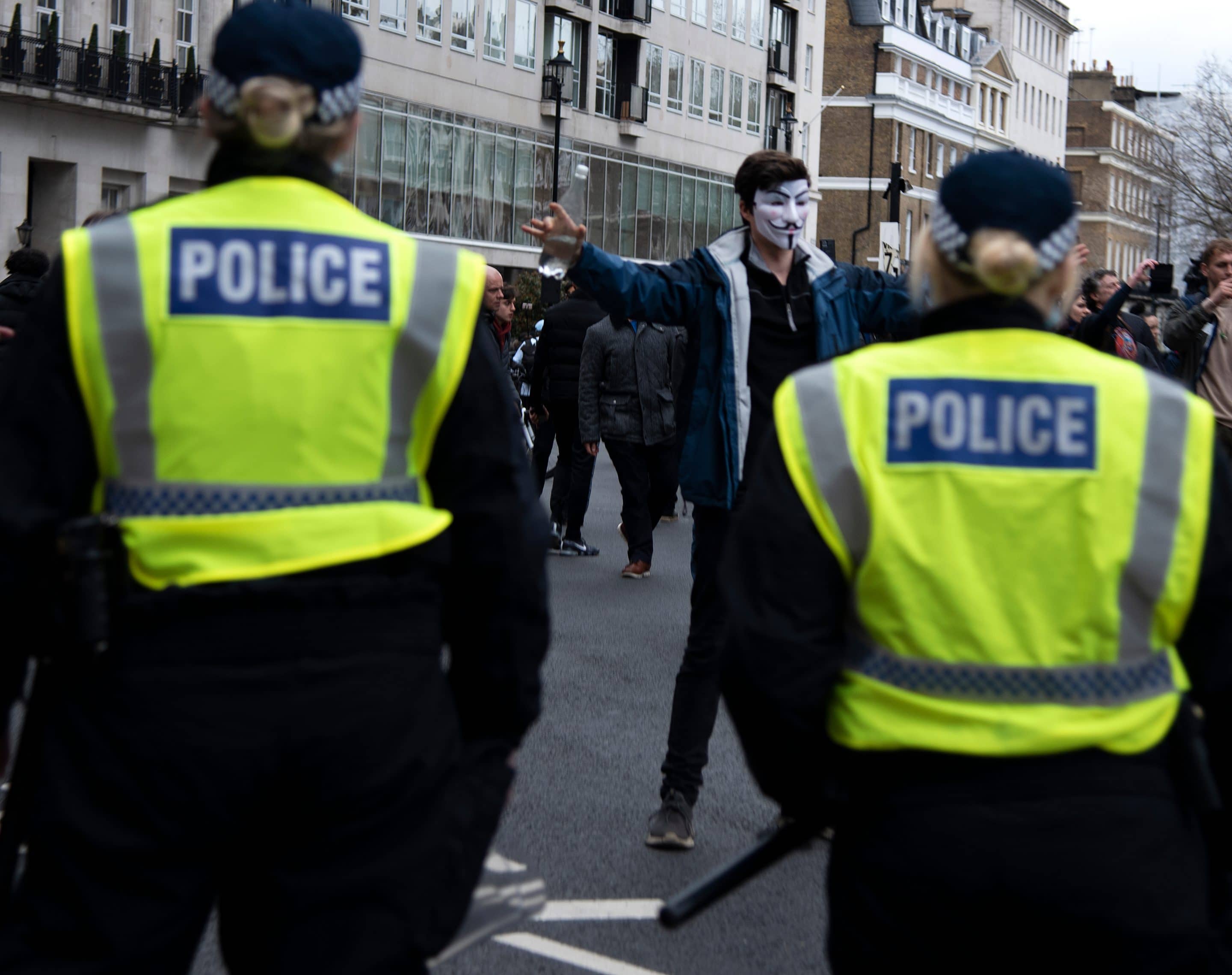Public Order Offences | Read Time 2-4 Minutes.
In the UK, public order offences are a form of offence that take place in public spaces. The Public Order Act ranges from things like public riots to a fight between two drunks at a pub. If you have been convicted for a public order offence, it’s likely you will receive a criminal record. Furthermore, this doesn’t only affect personal reputation, but it can also drastically derail certain careers.
There are a wide variety of offences included within the current Public Order Act 1986. However, for the purposes of this article, we have only covered the most commonly committed offences.
The Public Order Offences Act 1986
Before the introduction of the Public Order Act 1986, policing the public was based on common law offences and the Public Order Act 1936. However, serious public disorder at the Southall riot in 1979 and the Brixton riot in 1981 led to the creation of the Public Order Act 1986. The Public Order Act covers a list of offences, from less severe, to more serious crimes.
So, what are the public order offences?
Have you committed a public order offence?
If you’ve been accused of a public order offence, you’ll need a criminal defence lawyer on your side. Furthermore, if you just require more information with regards to other public order offences, please get in touch.
SPEAK TO OUR TEAM ON 020 3795 9020
1. Public Order Offence: Drunk and Disorderly
The drunk and disorderly public order offence is defined as an individual being drunk in a public place, engaging in threatening, abusive or insulting words or behaviour. Furthermore, the drunk and disorderly offence does not typically entail an element of violence, it is generally considered minor and can be at the polices own discretion.
The maximum fine you can expect to receive for being drunk and disorderly is a £1,000 fine.
2. Public Order Offence: Criminal Damage
Criminal damage is a type of offence that occurs when an individual unlawfully and intentionally damages property. You may receive a criminal damage charge if:
- The damage (permanent or temporary) was caused.
- Damage occurred to the property.
- An intention to cause the damage or recklessness led to the damage being caused.
- The damage caused was without a lawful excuse.
- The damaged property was caused without lawful reason.
In cases where the damage is less than £5000, the maximum sentence you can expect to receive is six months imprisonment. However, if the criminal damage exceeds the value of £5000, the maximum penalty you can expect is ten years imprisonment.
If the criminal damage is minor (breaking a window), you will most likely receive a conditional discharge or fine.
3. Public Order Offence: Threatening Behaviour
Threatening behaviour is defined as an individual making someone believe that unlawful violence will be used against them. To be convicted, it must be proven that you had the sole intention to cause harassment, alarm or distress to another individual. This can be caused through the following:
- Words
- Written representations (social media, phone messaging, letters)
- Behaviour
The maximum sentence you can expect from this offence is 6 months imprisonment. However, individuals can also receive an unlimited fine.

4. Public Order Offence: Affray
Affray is categorised as an individual using threatening, unlawful violence towards another of such severity that an individual fears for their own safety. This offence must be committed physically rather than verbally, so mere threats are not considered affray.
If you have been accused of committing affray, you should seek specialist legal representation.
The maximum sentence for affray is 3 years imprisonment. Furthermore, people can receive an unlimited fine.
5. Public Order Offence: Assaulting a police officer on duty
Assaulting a police officer is deemed an aggravated assault and is deemed by the courts as a more serious offence than common assault. Under section 89 of the police act 1996:
- It is a criminal offence to assault a constable in the execution of his duty or a person assisting a constable in the course of their duty.
- It is an offence to resist or wilfully obstruct a constable in the execution of his duty.
Assaulting a police officer is committed when an individual attacks another person by intentionally causing another to engage in the immediate infliction of unlawful force. Furthermore, an individual can be charged with this offence for recklessly causing another to engage in the immediate infliction of unlawful force.
If you are charged with the public order offence of assault on a police officer, you can expect to receive a sentence of up to 6 month’s imprisonment. Furthermore, individuals can expect to receive a fine of up to £5,000.
6. Public Order Offence: Riot Charges
A riot is defined as 12 or more people in a group who engage in violence or threaten to use violence against others. Furthermore, to be prosecuted for riot charges it has to be proven that the intention of violence was for the common purpose of making others fear for their own safety.
The penalty for rioting is particularly severe due to the serious nature of the offence. Therefore, it is always advised to seek legal advice when facing criminal offence charges for rioting.
The maximum sentence for this offence is 10 years imprisonment. Furthermore, individuals can expect to receive an unlimited fine for this offence.

7. Public Order Offence: Assaulting an emergency worker
A relatively new offence of assault against an emergency worker acting in exercising their functions was brought into force in November 2018. This offence aims to criminalise both common assault and battery against emergency workers.
The public order offence of assault against an emergency worker has given the court more severe sentencing powers. This is to deter individuals from assaulting emergency workers.
Emergency Workers include:
- Paramedics and medical professionals
- Prison officers
- Fire and rescue operatives
- Off-duty workers who put themselves on duty to help in an emergency
- Police officers
Despite a specific law for assault against a police officer, courts often use assault against an emergency worker as an alternative. Furthermore, this is to allow courts to serve heavier sentences on criminals.
The maximum sentence for assault against an emergency worker is 1-year imprisonment. Furthermore, you can also receive an unlimited fine.
8. Inciting racial or religious hatred
Racial or religious hatred is defined in legislation as hatred against a group of people based on colour, race, nationality, or ethnic or national origins.
By law, the public order offence prevents the use of threatening, abusive or insulting words or behaviour with intent to stir up racial hatred in the street or a public case. Furthermore, it is also an offence to display, distribute or publish written material that is threatening, abusive or insulting with intent to stir racial hatred.
The maximum sentence you can receive for inciting racial or religious hatred is seven years imprisonment. Furthermore individuals can receive an unlimited fine.
For more information on how we can help, please visit our criminal defence page. Furthermore, If you face a public order offence we can help, just give us a quick call on 020 3795 920.



0 Comments